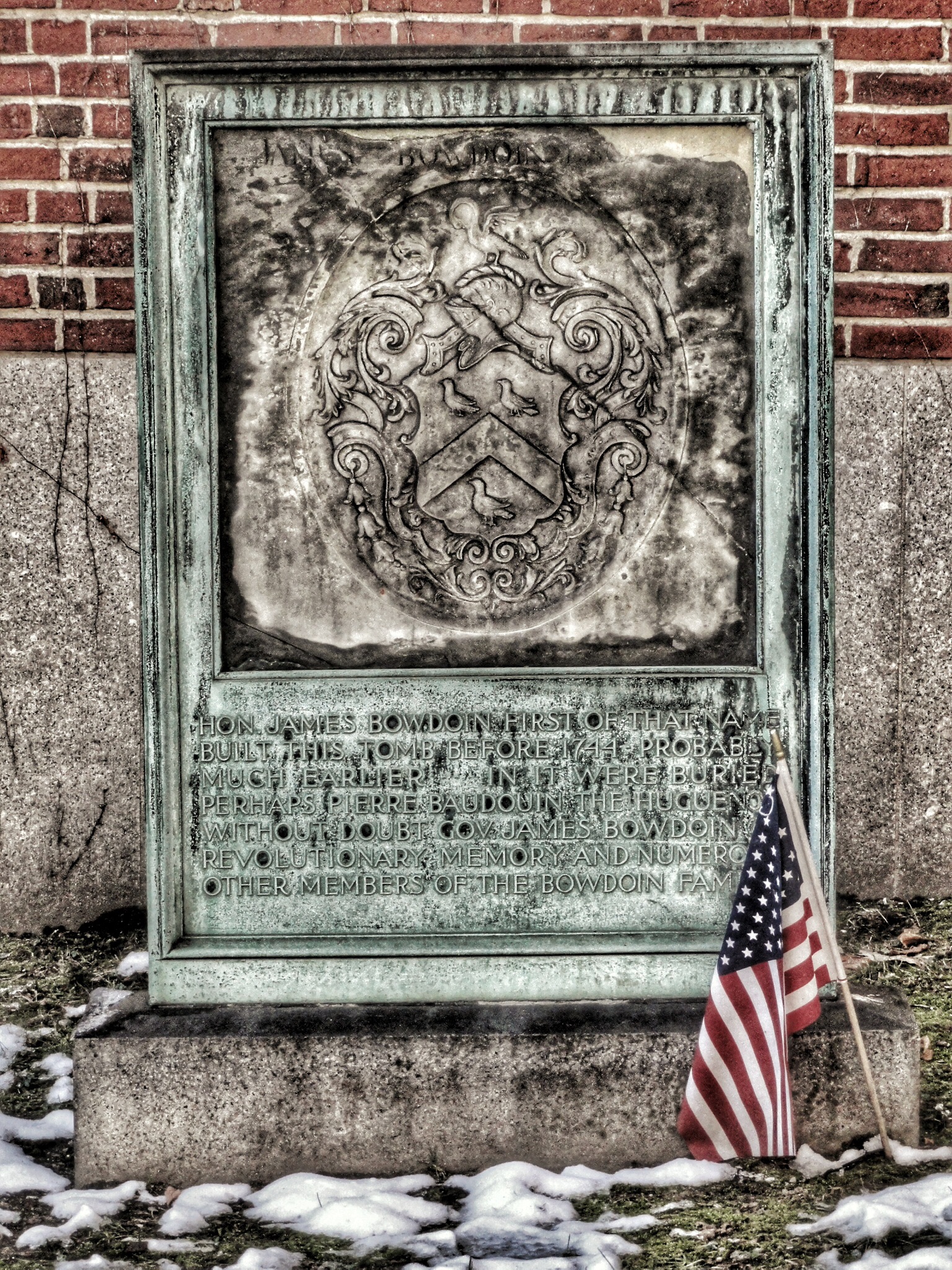“Next Door to Brazen Head”
Yesterday I related how the brazier James Jackson came to Boston from London and by December 1734 opened a shop called the Brazen Head, after its brass-covered sign.
That November, Benjamin Franklin directed a letter “To Mr. Henry Price At the Brazen Head Boston, N.E.” Price, a tailor, had come to Boston from England in 1723. Ten years later he founded the town’s first Freemasons’ lodge, having been named “Provincial Grand Master of New England and Dominions and Territories thereunto belonging” during a trip home. Franklin was writing on Freemasonry business.
I’ve found no other links between Price, the Brazen Head, and Jackson. Six years later Price advertised under the sign of “the Golden Fleece, in Kingstreet,” which was appropriate for his work as a tailor. It’s conceivable that Franklin just mixed up his mythological metallic signs. It’s also possible that Price and Jackson lived close together, and the Brazen Head was already a neighborhood beacon useful for directing mail.
Certainly it’s no surprise that a shiny brass head hung out on the town’s main street would become a landmark. Within five years, neighboring shopkeepers used Jackson’s shop sign to direct customers to their own businesses.
Here, for example, is an advertisement from the 7 Sept 1736 New-England Weekly Journal:
Back to the Brazen Head. Here’s another advertisement from the 12 Nov 1739 Boston Evening-Post:
TOMORROW: The controversies of Richard Fry.
That November, Benjamin Franklin directed a letter “To Mr. Henry Price At the Brazen Head Boston, N.E.” Price, a tailor, had come to Boston from England in 1723. Ten years later he founded the town’s first Freemasons’ lodge, having been named “Provincial Grand Master of New England and Dominions and Territories thereunto belonging” during a trip home. Franklin was writing on Freemasonry business.
I’ve found no other links between Price, the Brazen Head, and Jackson. Six years later Price advertised under the sign of “the Golden Fleece, in Kingstreet,” which was appropriate for his work as a tailor. It’s conceivable that Franklin just mixed up his mythological metallic signs. It’s also possible that Price and Jackson lived close together, and the Brazen Head was already a neighborhood beacon useful for directing mail.
Certainly it’s no surprise that a shiny brass head hung out on the town’s main street would become a landmark. Within five years, neighboring shopkeepers used Jackson’s shop sign to direct customers to their own businesses.
Here, for example, is an advertisement from the 7 Sept 1736 New-England Weekly Journal:
Several Sorts of Glass Bottles, as also good velvet Corks, To be Sold by Mr. Belthazar Bayard, next Door to Brazen Head in Cornhill, Boston.Bayard married Mary Bowdoin, and the couple were both eventually buried in the Bowdoin family tomb in the Granary Burying-Ground, shown here. Mary was a first cousin of Gov. James Bowdoin, commemorated on the plaque now affixed to that tomb.
Back to the Brazen Head. Here’s another advertisement from the 12 Nov 1739 Boston Evening-Post:
Just published,The eye-catching shop sign also meant that Jackson had less occasion to advertise his main business of brasswork. But, as was standard for Boston shopkeepers, he undertook to sell other things and needed to promote those goods. For example, the Boston Gazette for 23 June 1735 ran this notice:
An excellent SERMON on Regeneration, Preached to a numerous Audience, by George Whitefield, A.B. of Pembroke College, Oxford. Printed in London; Reprinted in Boston, and Sold by Charles Harrison, over-against the Brazen Head in Cornhill.
JAMES JACKSON, Founder,A couple of weeks later, on 7 July 1735, the New-England Weekly Journal announced:
At the Sign of the Brasen Head in Cornhill Boston makes and sells all sorts of Founders’ Wares, also Mends, Tinns, Buys or Exchanges all sorts of Copper, Pewter, Brass, Lead or Iron by wholesale or retail. Likewise a two Wheel’d Chaise well finish’d, and lin’d with Scarlett broad Cloth, with a good Harness, also a Chair lin’d with red Morocco Leather, with a good Harness, and both new, to be Sold reasonably by said Jackson.
Brown paper, TO BE SOLD, for ready Money, by James Jackson, at the Brazen Head in Cornhill, Boston.Which brings us to papermaker Richard Fry, one of Massachusetts’s more contentious characters in the 1730s and ’40s.
P.S. There will be no more Brown Paper made at Mr. Fry’s Mill at Stroudwater, at Casco-Bay
TOMORROW: The controversies of Richard Fry.


No comments:
Post a Comment